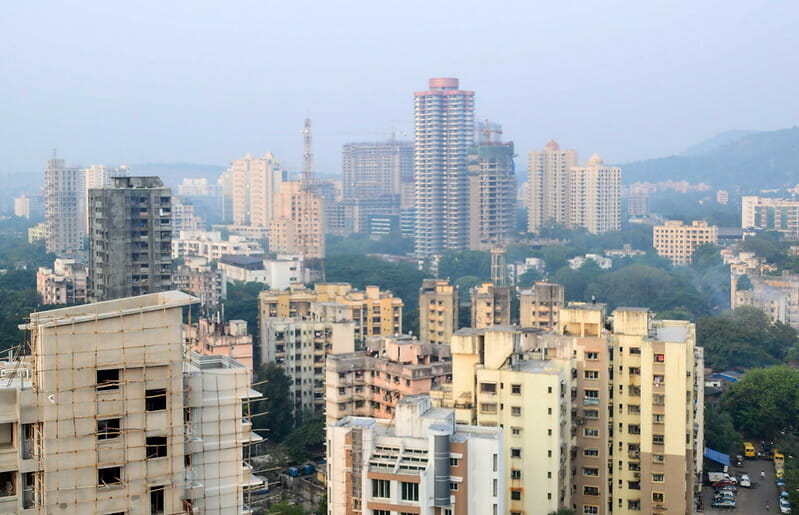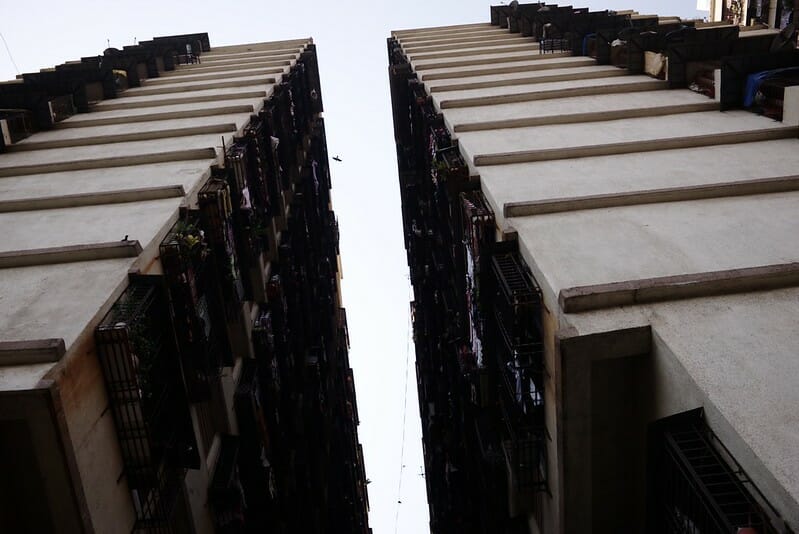- On January 4, a lift accident at Vikhroli claimed the life of a 20-year-old labourer of a 25-story building at Vikhroli, when the lift crashed from the 21st floor.
- Two persons died when the cord of their lift trolley snapped from the 15th floor at a Worli tower on January 9.
- Three months ago, a 5-year-old child, Mohammed Huzifa Shaikh lost his life on November 28, 2022 when he got stuck between the wooden door and the grill door between the fourth and the fifth floor of his Dharavi building.
- Another child, 16-year-old girl Reshma Khairavi, lost her life, when she propped out her head from a lift window while she was playing hide-n-seek and got hit by a neighbouring lift sliding down on October 28, 2022.
- A 62-year-old woman lost her life after her lift crashed from the fourth floor on November 6.
- A Malad school teacher lost her life when the lift door closed abruptly as she was entering and she got entangled between the lift and the walls
Mumbai has witnessed several deaths due to lift accidents. In 2022 four persons died in elevator mishaps and in 2023, three persons have already lost their lives in the first month of January.
As the city grows vertically, with over 4000 skyscrapers donning the Mumbai skyline, lifts have become an essential part of lives of citizens. An estimated (one) lakh lifts are installed in the Mumbai metropolitan region with about 60,000 lifts in the Mumbai city itself, according to officials from the lift inspectorate.
These deaths reflect the precarious safety standards in elevator usage and maintenance. Despite complete dependence on lifts, many users say they don’t feel confident using lifts, especially in badly maintained buildings, where safety may be compromised.
Lift accidents: Poor maintenance or human error
“Lifts are very safe to use but their functioning could get affected if not maintained well on a regular basis,” points out Uday Dambe, electrical inspector (lifts), energy department of Maharashtra government. The department oversees the functioning of lifts, their quality and maintenance right from their installation to their disbanding and even handles investigations of lift accidents.

Dambe feels that 70% of the lift accidents are due to badly maintained lifts and only 30% of accidents are caused by human error. He emphasises that proper maintenance of lifts such as regular servicing are crucial to keep the emergency mechanisms in perfect working condition.
“More than 10 safety safeguards in lifts get activated during emergencies to ensure public safety. The safety mechanisms are so good these days that a lift will not spiral down or collapse even if its cable snaps. Thanks to in-built mechanisms like lift brakes that will get activated, the lift will stop at the closest floor and doors open automatically for people to disembark during a mechanical failure or power outage,” says Dambe.
Lack of safety protocols, qualified mechanics
“Very often lift accidents happen after a long period of wear and tear of safety mechanisms. An unqualified lift mechanic may not be able to detect problems at an early stage, which could lead to major problems in the future. That’s why we, at the government, insist that only certified lift mechanics be hired for regular maintenance of lifts,” Dambe explains.
“Unnecessary fiddling with lift call buttons or using metal pointed objects on lift buttons could reduce the sensory functioning of lifts and thus blur its safety mechanisms. For examples, one of the safety mechanisms in lift is that when the lift senses a hand or object between the lift doors, it automatically opens the door at a floor.
However, if objects block the doors for long duration on a regular basis (when people tend to hold on to lifts at floors while waiting for people), then the sensory mechanisms lose their sharpness and tend to close doors afterwards. This could impact the safety of users as doors could start closing even when people are entering the lift leading to accidents. Hence, it is equally important to ensure that lifts are well-used well and kept functional at all times,” says Dambe.
Read more: Find out if your building is too secure to be safe
Why is lift maintenance ignored?
Dr Deepak Monga, business head – Fire and Safety of Spartan India, makers of fire evacuation lifts, believes that lift safety in general suffers because of a lackadaisical attitude towards maintenance of lifts. “People tend to view upkeep of lifts as unnecessary expenses without realising that it’s a question of being penny wise and pound foolish. They will end up risking their lives or eventually end up spending much more,” says Dr Monga, an expert in the field of fire and safety.
Anil Gachke, board member of the Electrical Contractors Association of Maharashtra, is also part of the committee that suggests modifications on the current legislation on lifts. He attributes both mechanical and human errors for the increasing number of lift accidents. Gachke, whose association members include lift maintenance contractors, feels the tendency to cut costs by housing societies results in lack of lift safety.
Read more: Does Mumbai not have money to fix its collapsing buildings?
“Housing societies want lifts in working condition without having to shell out money on their regular upkeep. They either try to avoid replacing spare parts regularly or prefer to go in for cheaper replacements. Most buildings summoned lift mechanics only in times of breakdowns and rarely for regular maintenance to save up on costs,” says Gachke.
He points out that though a wire rope, that pulls the lifts, needs to be replaced every 15 years, he has seen old cables in use for almost 24 years. He also laments that most often lift brake fuels, that get a lift to halt at the closest floor during breakdowns, are often not checked or changed, thereby resulting in the brakes not functioning properly during emergencies.
Challenges in elevator maintenance
Members of housing societies spoke about challenges in managing lifts. Karan Jotwani, committee member of Oshiwara’s Serenity Complex, which has about 250 flats spread over 9 buildings and uses 13 lifts, says it is difficult to keep tabs on mishandling of lifts by children or overloading of lifts by residents.
“Our four-year-old lifts breakdown because they are overloaded when people move houses. Our instructions are often disregarded. It is impractical to supervise – by our staff or by any member of the building committee, because we all have own responsibilities to handle.
Also, its not economically feasible for a small society like ours to retain an additional employee just for managing the lifts,” says Jotwani. He says that elevator breakdowns do tend to be costly. A lift technician charges Rs 2500 for every visit and an additional Rs 2500 for any extra work such as getting spare parts.
New lifts are also susceptible against dust that emanate from household repairs and need regular vacuum cleaning. Incidentally, their building had to invest in brand new lifts after the old lifts faced regular breakdowns after over 15 years of service.
Poor supervision of lifts
Gachke cites poor supervision from government officials, who fail to follow up with on-site visits about the status of badly maintained elevators. “Officials fail to visit and check if the repairs suggested by them have actually been carried out before issuing a new certificate of lift worthiness,” he points out.
“Lift users too are equally responsible as they want to jump out the moment a lift suffers a breakdown without waiting for a lift attendant to arrive. Most of the accidents take place when disembarking from a lift. Due to lack of awareness in people about basic procedures to be followed when a lift stops suddenly, people panic and try shortcuts that endanger their own lives. It is very important to emphasise the importance of preventive maintenance rather than lift breakdown maintenance, that is generally followed in many buildings,” says Gachke.

What is being done about lift safety?
Even as lift accidents increase, the Maharashtra government has taken a stern view about lift safety and has decided to inspect all lifts in the Mumbai metropolitan region. Lifts inspections are being prioritised and complaints are addressed swiftly, say officials.
“The department of lifts inspectorate is quite proactive in dealing with complaints against lift safety. Any complaint about lift safety receives a response generally in a day or two with a visit by lift inspectors and is dealt with strongly,” says Dr Monga.
Department of lift inspectorate from the government of Maharashtra investigates lift accidents. If negligence is found on the part of either the builder or chairman/secretary of a building, then the report is submitted to the police for action under Section 304 (A) for causing death by negligence. It could lead to imprisonment for two years or fine or both.
Jotwani feels that pinning blame on chairman or secretary of buildings for lift accidents is unfair as very often they play voluntary services.
What can we do to ensure lift safety?
- Ensure that lifts are maintained well.
- Get them inspected regularly only by an authorised lift maintenance contractor.
- Do have a lift attendant if possible to avoid misuse and tampering of any kind.
- Always ensure that children do not indulge in unnecessary fiddling of lift buttons.